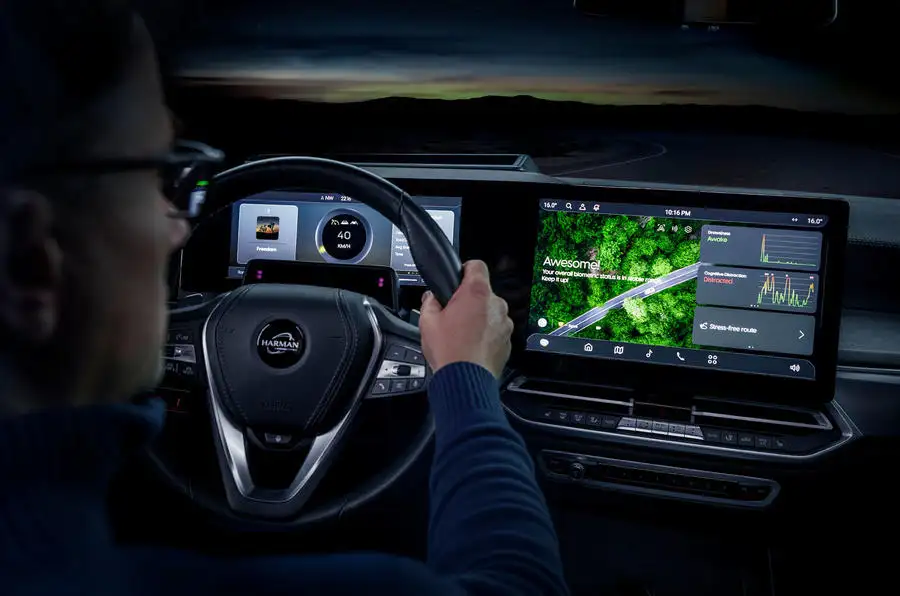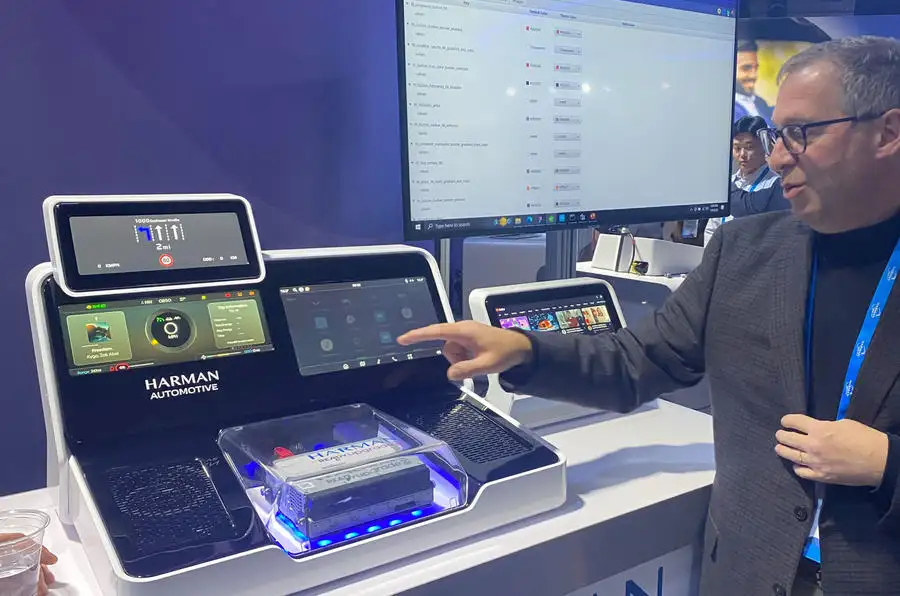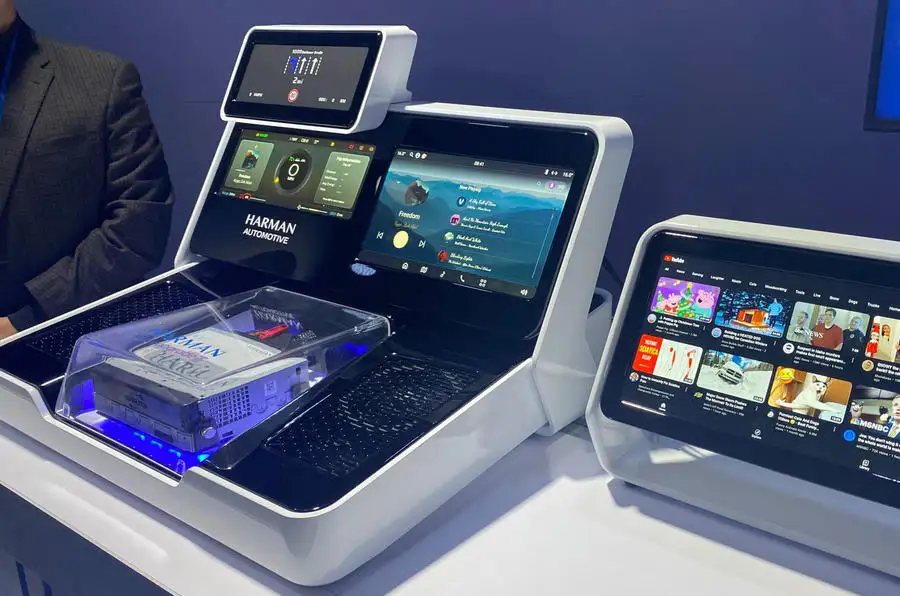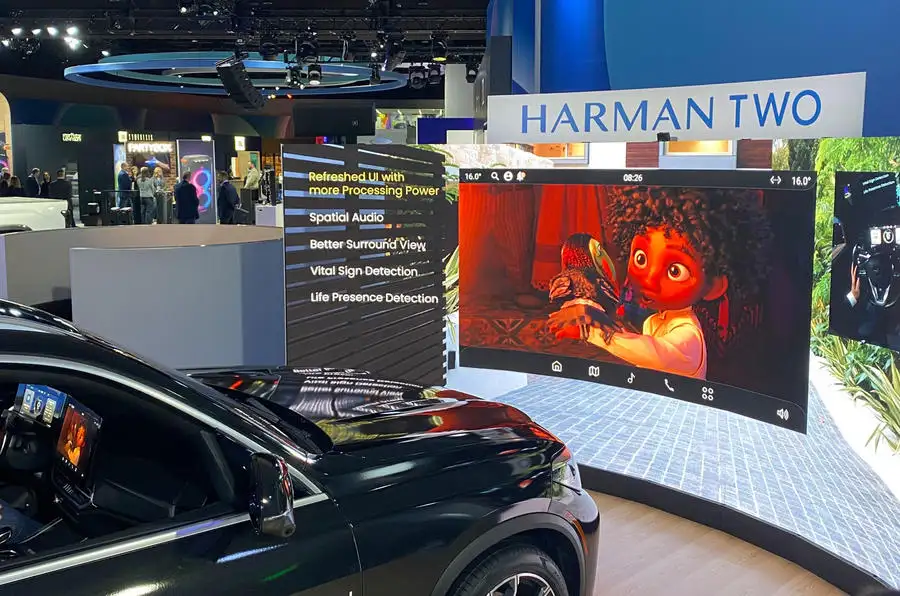The Samsung-owned OEM has shown its new hardware for future cars, including upgradeable plug-and-play infotainment.
How people interact with cars is changing at a rapid pace, but in some respects, it hasn’t kept up with the expectations of modern consumers. That’s especially true of the screens in cars, which have lacked the clarity, colour and definition of not just TV screens but also smartphones.
At the 2023 Consumer Electronics Show (CES) in Las Vegas, Armin Prommersberger, senior vice president of product management at automotive technology supplier Harman, showed how that could all be about to change. Considering that Harman is owned by Samsung, it’s odd that it has taken so long, but finally the technology of its new Ready Display interface promises to deliver true black instead of grey, more vivid colours and much better clarity.
“Auto makers can bring HDR quality displays from the living room into their vehicles,” he says. “Our relationship with Samsung allows us to integrate consumer electronics expertise into our innovation process, ensuring the experiences we create are built at automotive grade, with actual users in mind and in partnership with some of the world’s top consumer electronics experts.”
The screen tech, called Neo QLED Auto, uses Quantum Dot film and mini-LED backlighting to provide a high-definition display that’s almost the same quality as an OLED television at home, but without the cost. It will also be good news for those who want to watch movies or play games while their electrified vehicle is charging.
There is also a new core piece of hardware called Ready Upgrade. It looks simple enough, like an old car stereo component without a screen, but it’s likely to become the key to how people interact with their cars, including adding software and apps through Harman’s Ready on Demand. It all uses the Android Automotive Operating System and is linked to a toolkit that means the entire interface can be set up by a car company’s design team using a series of drop-down menus. It’s true plug-and-play, with a hardware upgrade likely to be every 18-24 months, says Prommersberger.
The question is how that hardware upgrade will be delivered for a customer, with speculation that it could be carried out at the end of a vehicle lease, during a major service or as part of a subscription package. Here, too, Harman is working on a number of solutions for the pricing of software upgrades or the unlocking of hardware.
BMW came in for criticism over the idea that drivers will have to pay to unlock heated seats, but Prommersberger says it’s something consumers will have to get used to. He compares it to a smartphone, which comes as standard with certain features but customers are used to paying extra to download apps or features to tailor the phone to the way they want it. Many will argue that it’s not quite the same when paying tens of thousands of pounds for a car, but it does seem to be the direction things are moving in.
Then there’s the matter of how distracting all this technology is, and while safety is often about the physical structure of a car or its driver assistance features, it’s also increasingly about what Eric Theisinger of Harman refers to as “mind on road”.
To try to keep a driver focused, he and his team have developed Ready Care, a suite of hardware and software that observes visual, cognitive and vital signs to tailor its intervention as needed. A simple infrared camera in the system monitors the driver’s heartbeat while another makes sure their face is alert and their eyes are focused on the road ahead. It’s a simple system to fit, with the potential to be installed not just by the car companies in new models but also perhaps at the request of insurance companies for new drivers.
Another new system is Harman’s Ready Vision, which incorporates elements such as augmented reality, smart navigation, vehicle-to-infrastructure communication and a head-up display that uses an in-car camera to automatically adjust to the driver’s eye level. It’s all designed to be informative without being distracting and to provide intelligent safety awareness for when a driver might have other things on their mind.
Harman supplies many of the major car makers, including BMW and the Volkswagen Group, and Prommersberger says these new products are ready to go, so could be rolled out to new cars as soon as this year.
Mark Smyth







